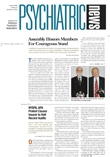Increases in the availability of certain kinds of medical technology—particularly freestanding diagnostic imaging and high-technology cardiac care—are linked to substantially higher spending.
The study, which appeared in the November 5 Health Affairs journal, confirms previous research showing that advancing technology is a major driver of health care costs. But the Health Affairs study is the first to provide evidence of direct usage and cost increases related to specific new technologies. In some cases technologies add millions of dollars a year to health care costs.
The study was conducted by researchers at Stanford University and the Analysis Group, a business and financial consulting firm in Boston. The study was supported by Blue Cross and Blue Shield Association (BCBSA).
“As we are confronted with large and seemingly incessant increases in cost, we have to pay attention to what we are spending money on,” said study co-author Laurence Baker, Ph.D., an associate professor of health research and policy at Stanford University. “Although advances in medical technology have produced large benefits in some cases, it is also quite likely that we are spending a considerable amount of money on new technologies that simply are not cost-effective.”
These are among the study’s findings:
• Adding one hospital with a cardiac catheterization lab per million population is associated with an increase of 2.2 percent per beneficiary in the number of cardiac care hospitalizations that involve a catheterization procedure.
• Adding one hospital capable of performing percutaneous transluminal coronary angioplasty per million population is associated with an increase in spending of approximately $1.3 million per 100,000 cardiac beneficiaries per year.
• Adding one hospital per million population capable of handling implantable cardioverter defibrillators leads to an increase in spending of about $1.1 million per 100,000 cardiac care beneficiaries per year.
In a Webcast discussion of the report on the BCBSA Web site, Carolyn Clancy, M.D., director of the federal Agency for Healthcare Research and Quality, hailed the study.
“We know very little about the benefits and potentially the harms of some of these new technologies,” she said. “This is particularly true in the diagnostic arena. All over America doctors are ordering X-rays and radiological procedures, and before the patient can have the test, you have to fill out why you are ordering it. But that isn’t captured anywhere, so it’s very hard to figure out what the benefit is of a particular procedure.
“We don’t have to begin thinking about how to slow technology if we can create better evidence that is transparent and available to all stakeholders,” she added. “Where we don’t have evidence, we need to identify the resources to support practical clinical trials—that is, trials that actually [help answer the questions of whether it is] worth paying for and what is the expected benefit.”
